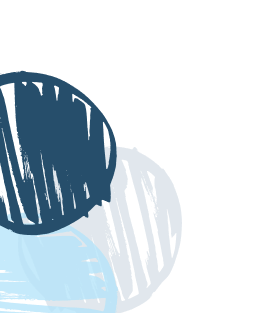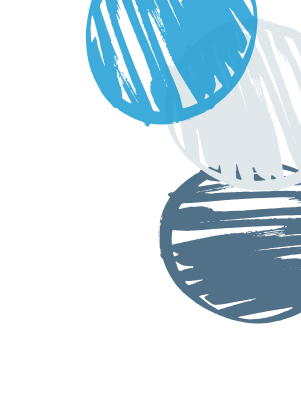

How Computing Systems Work

Click to Start Lesson
How Computing Systems Work
45min
Students will differentiate between inputs and outputs for computer-based systems and identify types of software used in different technologies.
Prerequisites
_Computer Science_: Students should have experience with using a computer.
Lesson Preparation
* Print one copy of the What is a Computer? Handout for each student.
* Students will need scissors and glue for the handout activity.
* If time is limited, you may skip the What is a Computer Handout activity.
Lesson Plan
Lesson Slides
Lesson Standards
| Standard | Description |
|---|---|
| AZ CS K-5: 3.IC.C.2 | With teacher guidance, brainstorm ways to improve the accessibility and usability of technology products for the diverse needs and wants of users. |
| AZ CS K-5: 4.IC.C.2 | Brainstorm ways to improve the accessibility and usability of technology products for the diverse needs and wants of users. |
| CA CS K-5: K-2.CS.2 | Explain the functions of common hardware and software components of computing systems. |
| CA CS K-5: K-2.CS.3 | Describe basic hardware and software problems using accurate terminology. |
| CA CS K-5: 3-5.IC.21 | Propose ways to improve the accessibility and usability of technology products for the diverse needs and wants of users. |
| CSTA 1B: 1B-IC-18 | Discuss computing technologies that have changed the world, and express how those technologies influence, and are influenced by, cultural practices. |
| CSTA 1B: 1B-IC-19 | Brainstorm ways to improve the accessibility and usability of technology products for the diverse needs and wants of users. |
| CT 1B: 1B-IC-19 | Brainstorm ways to improve the accessibility and usability of technology products for the diverse needs and wants of users. |
| DE 1B: 1B-IC-19 | Brainstorm ways to improve the accessibility and usability of technology products for the diverse needs and wants of users. |
| FL CS 3-5: SC.35.CS-CS.4.1 | Identify the basic components of a computer (e.g., monitor, keyboard, mouse, controller, speakers). |
| FL CS 3-5: SC.35.CS-CS.4.2 | Describe the function and purpose of various input/output devices and peripherals (e.g., monitor, screen, keyboard, controller, speakers). |
| FL CS 3-5: SC.35.CS-CS.4.3 | Compare and contrast hardware and software. |
| GA CS 3-5: CSS.EL.3-5.1.1 | Describe how internal and external parts of computing devices function to form a system. |
| HI 1B: 1B-IC-19 | Brainstorm ways to improve the accessibility and usability of technology products for the diverse needs and wants of users. |
| IA 1B: 1B-IC-19 | Brainstorm ways to improve the accessibility and usability of technology products for the diverse needs and wants of users. |
| IL 3-5: 3-5.IC.19 | Brainstorm ways to improve the accessibility and usability of technology products for the diverse needs and wants of users. |
| KY CS K-5: E-CS-02 | Identify and describe the function of common physical components of computing systems (hardware) using appropriate terminology. |
| MD CS K-5: 3.CS.D.01 | Identify internal and external parts of computing devices that function together to form a system. |
| MD CS K-5: 3.IC.C.01 | Identify how different technologies created by people from diverse backgrounds have contributed to computing and helped to change the world. |
| MD CS K-5: 4.IC.C.01 | Summarize how different technologies created by people from diverse backgrounds have contributed to computing and helped to change the world. |
| MD CS K-5: 5.CS.D.01 | Describe and model how internal and external parts of computing devices function to form a system. Describe how some components rely on others for correct functionality. |
| MD CS K-5: 5.IC.C.01 | Evaluate how different technologies created by people from diverse backgrounds have contributed to computing and helped to change the world. |
| MI CS 3-5: 1B-IC-18 | Discuss computing technologies that have changed the world, and express how those technologies influence, and are influenced by, cultural practices. |
| MI CS 3-5: 1B-IC-19 | Brainstorm ways to improve the accessibility and usability of technology products for the diverse needs and wants of users. |
| MS CS 3-5: IC.1B.1 | Discuss computing technologies that have changed the world and express how those technologies influence and are influenced by cultural practices. |
| MS CS 3-5: IC.1B.2 | Brainstorm ways to improve the accessibility and usability of technology products for the diverse needs and wants of users. |
| NC CS 3-5: 35.IC.02 | Explore the tools that can be used to improve accessibility and usability of technology products for the diverse needs and wants of users. |
| NE K-5 Technology: NE.K5.12 | Demonstrate an understanding of the relationship between hardware and software. |
| NE K-5 Technology: NE.K5.14 | Identify major computer components. |
| NE K-5 Technology: NE.K5.15 | Describe the components and functions of computers and networks. |
| NE K-5 Technology: NE.K5.55 | Demonstrate and understanding of how information is represented, stored, and processed by a computer. |
| NH 1B: 1B-IC-18 | Discuss computing technologies that have changed the world, and express how those technologies influence, and are influenced by, cultural practices. |
| NH 1B: 1B-IC-19 | Brainstorm ways to improve the accessibility and usability of technology products for the diverse needs and wants of users. |
| NJ CS 3-5: 8.1.5.CS.1 | Model how computing devices connect to other components to form a system. |
| NJ CS 3-5: 8.1.5.CS.2 | Model how computer software and hardware work together as a system to accomplish tasks. |
| NM 1B: 1B-IC-18 | Discuss computing technologies that have changed the world, and express how those technologies influence, and are influenced by, cultural practices. |
| NM 1B: 1B-IC-19 | Brainstorm ways to improve the accessibility and usability of technology products for the diverse needs and wants of users. |
| NV CS K-5: 3.CS.D.1 | Describe how internal and external parts of computing devices function to form a system. |
| NV CS K-5: 3.IC.C.1 | Discuss computing technologies that have changed the world, and express how those technologies influence and are influenced by cultural practices. |
| NV CS K-5: 4.CS.HS.1 | Model how computer hardware and software work together as a system to accomplish tasks. |
| NV CS K-5: 4.IC.C.1 | Compare and contrast how computing has changed society from the past to the present. |
| NY 4-6: 4-6.DL.5 | Identify common features of digital technologies. |
| NY 4-6: 4-6.IC.6 | Identify and explain ways to improve the accessibility and usability of a computing device or software application for the diverse needs and wants of users. |
| NY CS K-6: 2-3.IC.6 | Identify and discuss factors that make a computing device or software application easier or more difficult to use. |
| NY CS K-6: 2-3.NSD.1 | Describe and demonstrate several ways a computer program can receive data and instructions (input) and can present results (output). |
| NY CS K-6: 2-3.NSD.2 | Explain the function of software in computing systems, using descriptive/precise language. |
| NY CS K-6: 4-6.DL.5 | Identify common features of digital technologies. |
| OK CS 3-5: 3.CS.HS.01 | Model how information flows through hardware and software to accomplish tasks. |
| OK CS 3-5: 3.DA.S.01 | Recognize that different types of information are stored in different formats that have associated programs (i.e., documents open in a word processor) and varied storage requirements. |
| OK CS 3-5: 3.IC.C.01 | Identify computing technologies that have changed the world, and express how those technologies influence, and are influenced by, cultural practices. |
| OK CS 3-5: 3.IC.C.02 | Identify possible problems and how computing devices have built in features for increasing accessibility to all users. |
| OK CS 3-5: 4.IC.C.01 | Give examples of computing technologies that have changed the world, and express how those technologies influence, and are influenced by, cultural practices. |
| OK CS 3-5: 4.IC.C.02 | Brainstorm problems and ways to improve computing devices to increase accessibility to all users. |
| OK CS 3-5: 5.IC.C.01 | Give examples and explain how computing technologies have changed the world, and express how computing technologies influence, and are influenced by, cultural practices. |
| PA 1B: 1B-IC-18 | Discuss computing technologies that have changed the world, and express how those technologies influence, and are influenced by, cultural practices. |
| PA 1B: 1B-IC-19 | Brainstorm ways to improve the accessibility and usability of technology products for the diverse needs and wants of users. |
| RI CS K-5: 1B-CSN-H-1 | Describe how people interact with the various parts of computing systems to accomplish tasks. |
| RI CS K-5: 1B-RC-CU-2 | Identify ways to improve the accessibility and usability of technology products for the diverse needs and wants of users. |
| SC CS K-5: 3.CS.1.1 | Compare and contrast computing devices (e.g., tablets, laptops, smartphones). |
| SC CS K-5: 3.CS.1.2 | Identify the parts of a computing device (e.g., input devices, output devices, processors). |
| SC CS K-5: 3.CS.2.2 | Compare operating systems to application software (e.g., word processor, spreadsheet, presentation software, web browser). |
| SC CS K-5: 4.DL.4.2 | Use software capabilities to correct errors. |
| SC CS K-5: 4.CS.1.3 | Describe the major hardware components (e.g., memory, processor) of a computing device (e.g., tablets, laptops, smartphones). |
| SC CS K-5: 4.CS.2.1 | Explore the limitations and advantages of various computing devices for particular uses. |
| SC CS K-5: 4.CS.2.2 | Explore application software (e.g., word processor, spreadsheet, presentation software, web browser). |
| SC CS K-5: 5.CS.1.1 | Select the appropriate computing device for an application (e.g., writing an essay on a laptop versus on a smartphone). |
| SC CS K-5: 5.CS.1.2 | Explain the importance of the major hardware components of the computing device (e.g., input and output devices, processors). |
| SC CS K-5: 5.CS.2.1 | Justify the use of different computing devices for relevant tasks. |
| SC CS K-5: 5.CS.2.2 | Explore and compare multiple software applications (e.g., word processor, spreadsheet, presentation software, web browser). |
| SC CS K-5: 5.CS.3.2 | Identify the computing device components that may cause various problems. |
| TN CS K-5: K.CCP.1 | Identify, using appropriate terminology, common physical components of computing systems (hardware). For example, but not limited to, desktop computers, laptop computers, tablet devices, monitors, keyboards, mice and printers. |
| TN CS K-5: 1.CCP.1 | Recognize and utilize common physical components of computing systems (hardware) and software concepts using correct terminology. For example, but not limited to, laptop computers, tablets, monitors, keyboards, printers; software concepts such as sign-in requirements, input, output, debug, and program. |
| TN CS K-5: 2.CCP.1 | Identify and describe how hardware and software components make up a computing system. |
| TN CS K-5: 3.CCP.1 | Recognize and understand that a series of devices and components form a system of interdependent parts with a common purpose. |
| TN CS K-5: 4.CCP.1 | Recognize the input and output devices along with the components that form an interdependent system with a common purpose. |
| TN CS K-5: 4.CCP.7 | Describe ways that hardware and software are used by various members of society including accessibility features. For example, voice commands can be used for accessibility or convenience. |
| TN CS K-5: 5.CCP.1 | Identify and describe the role of various input and output devices and components that are within an interdependent system with a common purpose. |
| UT CS K-5: 3.CS.1 | Describe and model how computing devices connect to other components to extend their capabilities and form a system. |
| UT CS K-5: 4.CS.1 | Demonstrate how computer hardware and software work together as a system to accomplish tasks. |
| UT CS K-5: 4.IC.2 | Propose ways to improve the accessibility and usability of technology products for the diverse needs and wants of users. |
| WA 1B: 1B-IC-18 | Discuss computing technologies that have changed the world, and express how those technologies influence, and are influenced by, cultural practices. |
| WA 1B: 1B-IC-19 | Brainstorm ways to improve the accessibility and usability of technology products for the diverse needs and wants of users. |
| WI CS 3-5: IC1.a.2.i | Discuss computing technologies that have changed the world and express how those technologies influence, and are influenced by, cultural practices. |
| WI CS 3-5: IC1.a.3.i | Generate examples of how computing can affect society, and also how societal values can shape computing choices. |
| WI CS K-2: CS1.a.1.e | Identify and use software that controls computational devices to accomplish a task (e.g., use an app to draw on the screen, use software to write a story or control robots). |
| WI CS K-2: CS1.a.2.e | Use appropriate terminology in naming and describing the function of common computing devices and components (e.g., desktop computer, laptop computer, tablet device, monitor, keyboard, mouse, printer). |
| WI CS K-2: CS1.b.1.e | Identify the components of a computer system and what the basic functions are (e.g., hard drive, and memory) as well as external features and their uses (e.g., printers, scanners, external hard drives, and cloud storage). |
| WI CS K-2: CS2.a.1.e | Identify, using accurate terminology, simple hardware and software problems that may occur during use (e.g., app or program not working as expected, no sound, device won't turn on). |
| WY CS 3-5: 5.IC.C.01 | Give examples and explain how computing technologies have changed the world and express how those technologies influence and are influenced by cultural practices. |
| WY CS K-2: 2.CS.HS.01 | Demonstrate and describe the function of common components of computing systems (hardware and software) (e.g., use a browser, search engine). |